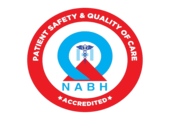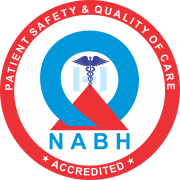What is Epiphora (watering of the Eyes)?
Watering of the eyes is medically termed epiphora which is a common condition. Symptoms range from the trickling of tears occasionally to the pouring of tears throughout the day. This is a common condition often delays seeking medical attention due to a lack of awareness about the condition.

Read more on General Eye Care.
Epiphora or watering of the eyes may be caused due to excessive production of tears or defective drainage of the tears. The tears produced by our tear (lacrimal) glands normally pass through a tear drainage system comprising two smaller tubes, a sac and a larger tube that drains into our nose. (and hence the feeling of bitter taste when certain eye drops are instilled!).
The condition may affect any age group from birth to elderly patients. When it occurs in children, mostly due to obstruction in the tear draining passage which spontaneously opens up by the end of 1 or 2 years of age. This can be aided with the help of a massage done at the corner of the eye with pressure directed downwards. In certain cases, the obstruction can be relieved by a procedure called probing, which, in most cases is effective. If this also fails, a surgical intervention involving creating an alternate conduit for the passage of tears into the nose may be done.
In adults, the obstruction is in the tube located within the nasal bone, thus the tears stagnate in the sac and get infected. Since the blocked tube is within the nasal bone, surgery is the only option. This surgery called an external dacryocystorhinostomy (DCR) comprises of an incision made on the skin at the corner of the eye, near our nose and making an opening in the nasal bone, thus creating an alternate route for the tears to flow. In case you wish for scar-free surgery, this can also be performed from within the nose, in a reverse fashion, with the help of an endoscope.
This surgery, called endonasal DCR has a good success rate of about 90% but still is less when compared to 96% with conventional surgery. ( unless done under expertise)
At times, tear tube openings stenose resulting in poor outflow. In this situation, the opening can be enlarged with a stent. If the smaller tubes are blocked, they will have to be opened and the opening is maintained with the help of intubation.
Watering of the eyes can also be seen in conditions involving eyelid inflammation resulting in altered tear composition. This may result in dryness of the eyes, a burning sensation, and blurred vision. It has to be treated with tear substitutes and lid hygiene.
It can also be seen in conditions when the eyelashes are misdirected and rub against the eye. Eyelid malposition can cause tearing as well. If the lid margin is not abutting the globe and is turned inwards, it would result in the eyelashes touching the globe. Likewise, if it is turned outwards, the inner portion of the eyelid, as well as the eye gets exposed to air; hence a reflex tearing is experienced. In such cases, the lids should be re-positioned surgically.
One of the most common causes is conjunctivitis commonly called the Madras eye which has to be treated with antibiotics. Having this brief knowledge about the condition of the watering eye, when should one seek medical attention for this?
Immediately, if you notice a drop in your vision, redness, swelling in the eyes with pain and sticky discharge. This could relieve the problem earlier.
To summarize, watering of eyes is a common condition that though seems simple could be a symptom of many conditions that need medical intervention. Early diagnosis and treatment could help you get rid of the watering of your eyes as your tears are precious.
Consult our Experts at Shekar Eye Hospital for treatment and diagnosis of Teary Eyes.








